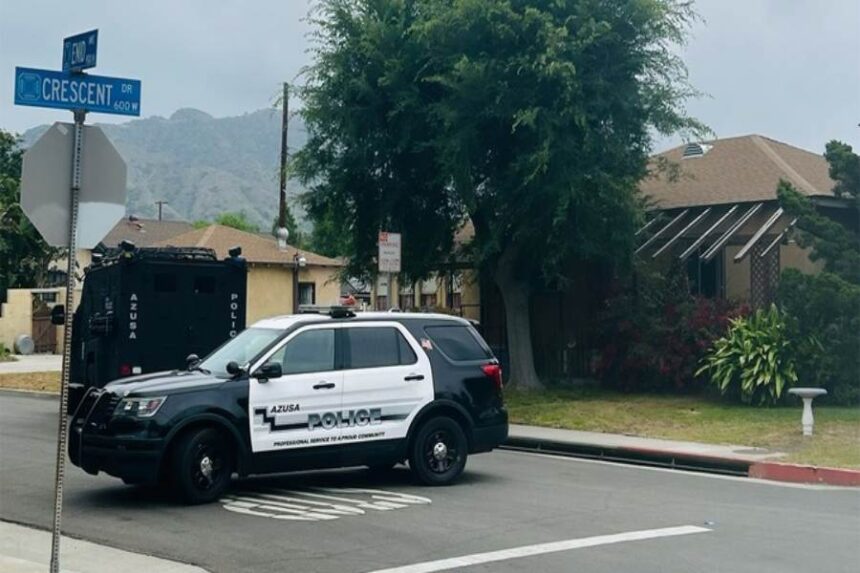In the serene suburb of Azusa, California, a decade-long mystery and menace came to an unexpected close with the death of 81-year-old Prince Raymond King. Known infamously amongst his neighbors as the “serial slingshot shooter,” King’s sudden death from natural causes adds a poignant epilogue to a saga of vandalism that tormented a community for years.
The trouble began around 2015 when residents noticed damage to their windows and vehicles. These incidents were initially sporadic but grew in frequency and severity. The mystery of the unidentified vandal, who left families anxious and properties damaged, loomed large over this tight-knit community.
It wasn’t until the spring of 2024 that a breakthrough came. Following numerous complaints, the Azusa Police Department intensified its investigations, which led them to Prince Raymond King’s doorstep. Inside his home, officers found a slingshot and a stash of metal ball bearings, the same projectiles that had been terrorizing the neighborhood. On May 23, King was arrested and charged with multiple counts of felony and misdemeanor vandalism, spanning incidents from October 2021 to May 2024.
The news of King’s arrest brought mixed reactions from the community. Relief was palpable among many who felt that their long-standing fears could finally be put to rest. However, there was also a sense of disbelief that an elderly man, a familiar face to many, could be behind such prolonged hostility.
Despite the severity of the allegations, King’s age and health conditions played a significant role in the subsequent legal proceedings. His defense attorneys highlighted multiple medical issues, which ultimately influenced the court’s decision to release him under strict conditions. He was ordered not to return to his residence except to collect medications and was barred from contacting the victims or coming within 200 yards of their properties.
Just days after his release, King was found dead in his home. The Los Angeles County Department of Medical Examiner confirmed that the death was due to natural causes, specifically arteriosclerotic cardiovascular disease. This sudden turn of events brought an abrupt end to the legal proceedings and left the community grappling with complex feelings.
King’s actions and his subsequent death raise several ethical and psychological questions. What drives an elderly individual to commit such acts against his own neighbors? How does the community reconcile the relief of resolution with the sadness of his lonely demise? These questions reflect the deeper societal challenges of dealing with aging populations who might struggle with isolation or mental health issues.
The slingshot attacks profoundly impacted the neighborhood’s sense of security. Families were afraid to leave their homes unattended, and parents were wary of letting their children play outside. The fear of sudden and unexplained attacks took a toll on the community’s quality of life, turning neighborly suspicion into a common feeling.
The resolution of the case does not erase the years of distress endured by the residents. The psychological scars and damaged property are reminders of the bizarre and destructive behavior that King exhibited. For some, the fear may ease, but the incidents will remain a significant part of their lives, a story to be recounted with relief and regret.
As Azusa moves forward, the community must find ways to heal and reflect on this unusual episode. Engaging in neighborhood watch programs, community meetings, and open dialogues about safety and mental health can help restore the communal bonds strained by this ordeal.
King’s case reminds us of the complexities that can arise when dealing with criminal behaviors in aging populations. It highlights the need for vigilance, compassion, and perhaps reevaluating how communities can better monitor and support their elderly residents to prevent such incidents.
While the legal case has closed with King’s death, the story leaves a lasting impression on the need for community resilience and proactive measures. Azusa’s residents will hopefully find peace in the resolution and wisdom in recognizing their collective strength and perseverance through years of adversity.
In conclusion, the strange case of Prince Raymond King, Azusa’s “serial slingshot shooter,” underscores the unpredictable nature of human behavior and the profound impact of individual actions on community well-being. As this chapter ends, its lessons about empathy, vigilance, and community engagement will continue to resonate within and beyond Azusa.




